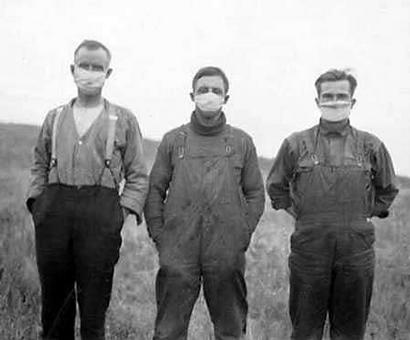
Direct link to this page: https://www.hayadan.org.il/flu1918.html
Scientists from the United States and Britain reported last Thursday that the 1918 flu virus, which killed 20 million people worldwide, was likely so deadly because of a protein similar to a bird-derived protein.
Similar to the current outbreak of bird flu in East Asia, the 1918 flu was probably transmitted to humans from birds, having undergone a slight modification, the scientists write in this week's issue of the journal Science.
However, unlike the bird flu in 1918, the current bird flu, which killed sixteen people, did not develop the mutation that allowed the flu virus to wipe out a significant portion of the world's population 80 years ago.
"The study says that the transmission between birds and humans may occur in more than one way," said John Scahl of the British Medical Research Council and one of the leaders of the study in a telephone interview.
The research teams analyzed samples of the virus from the outbreak in 1918 and said that it bears the clear stamp of an avian virus, which underwent very few changes before passing to humans.
Health officials in China, Thailand, South Korea and Vietnam are struggling to contain the current outbreak of bird flu, known as H5N1. It is fatal to humans, and this is usually the case when viruses pass from one species to another.
In 1997, when the flu first appeared in Hong Kong, it was subdued very quickly, as it did not pass from humans to humans, but only from birds to humans.
This year so far the disease has killed sixteen people, but evidence is mounting that it has begun to pass between humans. If that happens, experts fear that the virus has the potential to be as deadly as the 1918 pandemic.
The researchers point out that understanding what causes viruses to become deadly and what allows them to live and spread among people is the key to subduing future epidemics or providing preventive treatment for them.
Skahl's team, as well as another team led by Ian Wilson of the Scripps Research Institute in La Jolla, California, looked at bits of the virus taken from the bodies of victims, some of which were buried in the frozen ground of Alaska and some of which were kept in laboratories.
They specifically looked at a part of the virus, called hemagglutinin, which is a protein that viruses use to infect cells. Each strain of the virus has a unique hemagglutinin structure, and scientists believe that tiny mutations in this protein allow it to infect other species.
The virus from 1918 was an H1 virus - a different virus from the H5N1.
The researchers found that it had unique structures that might have given it "unrecognized mechanisms" for infecting people, Wilson and his colleagues wrote. This fact may explain why the epidemic of 1918 claimed the lives of so many young and robust people.
It also explains why the current bird flu outbreak hasn't reached frightening proportions so far, Scahl said.
"Apparently, what prevents the current flu from spreading from person to person is the hemagglutinin structure of the virus, which has not yet evolved so that it could easily infect humans," said Skahl.
"This gives us more information about the transmission of infections between humans and birds," he added.
"However, the new information will not have an immediate impact on the developing situation in the Far East with the bird flu known as 5H, because from our previous work, we know that the hemagglutinin from the 1918 flu and the 5H are quite different."
He said that scientists should test poultry for various forms of influenza to see what else might be hiding there and infecting people.
(Translation: Dikla Oren)
Link to the original article on Yahoo
https://www.hayadan.org.il/BuildaGate4/general2/data_card.php?Cat=~~~764403951~~~244&SiteName=hayadan
